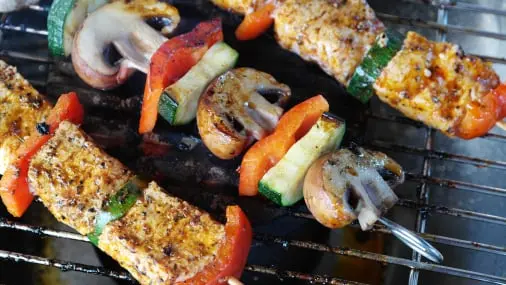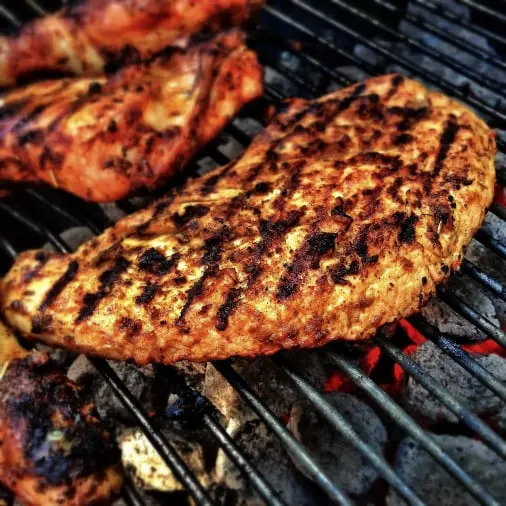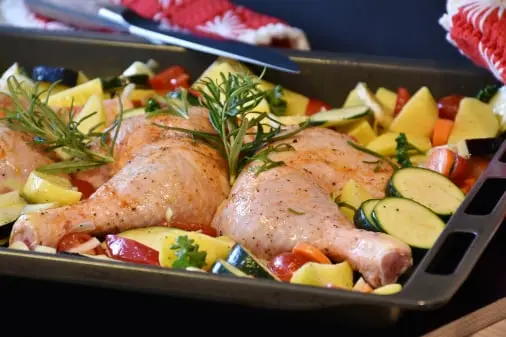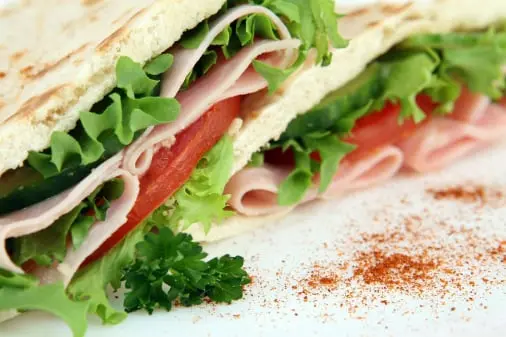Meat Meat Packing Quality Control Traceability:
Meat Packing Quality Control Traceability for Export / import app manages entire meat packing operation, from slaughter, cutting, ageing, packing, shipping and export. Complete quality inspection for meat packing and processing.

Meat Meat Packing Quality Control Export Traceability during production & packing
View Traceability App Specifications.
TOP FOOD SAFETY CHALLENGES IN THE MEAT INDUSTRY
Ensuring Food Safety in today’s day and age, is the most important and critical requirement of the Food industry, considering the increasing food-borne illness globally, with each passing year. With changing times, food safety is directly linked to promoting good health, nutrition, which would in turn ensure a healthy workforce along with a stable economic growth for manufacturers, suppliers, consumers, industry and ultimately the nation. Food Safety is a growing challenge for countries all over the world, and the pandemic that the world is facing today, throws light on how crucial it is, for the very existence of a healthy life and environment.
FOOD SAFETY IN INDIA
The Food Safety and Standards Authority of India (FSSAI) releases a Food Safety index of States to measure the food safety on the basis of five parameters namely human resources and institutional data, compliance, food testing facility, training and capacity building besides consumer empowerment. This is to ensure states follow safe food practices and pay attention to nutrition and health.
Amidst its numerous challenges, the COVID-19 pandemic offers a serendipitous opportunity to strengthen India's food safety system. Food safety highlights the hygiene and sanitary requirements, management responsibilities and sector specific requirements to prevent the spread of COVID-19 across the food supply chain. Safe food and hygienic practices are the pillars for ensuring food safety, and also form a strong basis for minimizing people-to-people spread and cross-contamination of COVID-19 in food operations. Keeping this in mind, existing personal and food hygiene measures in India need to be audited and possibly strengthened if need be.
FOOD SAFETY AS A CHALLENGE IN MEAT INDUSTRY
Industries processing grains, sugar, edible oils, beverages and dairy products are the major industries constituting the Food processing industry. The key sub-segments of the Food Processing industry include the Dairy, Fruits & Vegetables, Poultry & Meat processing, Fisheries, Food retail etc. Here, we talk about the meat industry specifically.
Top food safety challenges in Meat industry include -
Coping up with the constantly evolving food regulations.
Complying with the Food Industry safety standards.
Maintaining meat quality standards in the overall processes.
Maintaining meat quality assurance in the entire supply chain from breeding, processing, packaging to distribution.
Meeting consumer expectations equally every time.
Ensuring all the above mentioned requisites simultaneously, along with maintaining a balance between the supply and demand, is the biggest challenge for any meat industry to uphold its position in the market. Industries, who are able to ada

Meat Meat Packing Quality Control Export pack house hygiene checklist for food safety
IMPORTANCE OF QUALITY ASSURANCE WITHIN THE MEAT INDUSTRY
Meat and meat products are the major contributor for protein rich foods in the food industry. Along with this it is also understood that they are also the highest-risk category in the food industry. With consumers today, being more and more informed and concerned about the quality of food they purchase, meeting the ever-evolving meat quality standards has become implicit, throughout all other processes, in the entire supply chain. Meat manufacturers need to adopt new approaches, strategies and services to meet current compliance standards, and expedite their access to the meat market. A predominant approach to this involves meat quality assurance through effective meat quality testing and getting a meat safety certificate through the expertise provided by an internationally recognised meat quality testing service provider. We are a globally accredited meat quality testing and certification provider offering a wide array of analytical services for the testing of raw materials and semi-manufactured or finished meat products.
MEAT QUALITY ASSURANCE, MEAT QUALITY TESTING AND SAFETY CERTIFICATION
Meat quality assurance is a proactive and preventive approach to have quality control of meat and meat products. It helps to keep in check whether a safe, hygienic and clean environment is ensured during livestock breeding, processing, supply, transportation and storing. Meat quality assurance includes inspections, lab meat quality testing, audits, meat quality control and meat safety certification as per the guidelines and regulations of the destination market. Lab meat quality testing involves freshness control, grading the meat, tests to identify any residue, stability and shelf life. Meat quality testing is a part of meat quality assurance and they majorly ensure that safe, clean and good manufacturing practices are followed in the complete meat supply chain. Additionally, meat quality control includes tracking of the entire process, identifying if any deviations occur, verifying and maintaining a standard procedure. All these processes are done to eliminate, reduce or prevent food safety hazards. With timely quality testing of meat and meat products, a systematic verification as per regulations can be done, and corrective actions can be taken whenever there is a deviation from the set standards.
With increasing consumer demand for good quality, safe, ready to eat food products round the year, it is important to take a preventive approach to maintain the highest level of meat quality assurance to ensure a stronghold in the national and international market, thus increasing share in the meat trade including exports. Manufacturers must deploy production processes according to the principles of HACCP (Hazard Analysis and Critical Control Point), as well as ensure hygienic optimum conditions. HACCP Meat Quality Control Checks ensures conducting hazard analysis, pinpoint critical control points, and establish critical limits, monitoring procedures, establishing corrective actions, recordkeeping and verification of established procedures. All this coupled with safe and hygienic operating procedures will provide the highest level of meat quality assurance. A quality auditor or inspector when inspects, provides a meat safety certificate. This certification is recognised nationally or globally and provides brand recognition in respective markets. Meat safety certificate would help mitigate risk, save time and money, ensure better market access and inspire confidence in consumers and help grab a bigger market altogether.

Meat Meat Packing Quality Control Export Traceability management best practices
ADDRESSING THE FOOD SAFETY CHALLENGE
Addressing food safety challenges is possible, only when the industry takes efforts to improve with changing trends and developments at the forefront of food safety and quality assurance as per regulations and adopting best practices to make food risk-free with the best use of scientific processes, safe for the overall environment. The key to addressing challenges is being informed, accepting change, adopting the evolving developments and implementing new processes with ever-changing and fast-growing times.
The first step towards having a successful business and establishing a brand name for your meat industry, is to have a scientific approach to ensure food safety. For this, you would need a robust quality assurance system and a good tie up with the best of the meat quality testing facility and meat safety certificate provider. We help meat industry suppliers, manufacturers and retailers to ensure that the meat and poultry in their supply chains is manufactured to high standards, stored and distributed under the right temperature conditions, and is compliant with local and international. Visit TÜV SÜD for more information related to food quality testing and food quality certification.
Simplifying Quality Assurance for the Meat Processing Industry
An automated temperature monitoring and electronic checklist system offers the modern meat processing plant a broad range of HACCP-compliant, money-saving benefits.
Do you know what’s happening in your meat processing plant after hours? On weekends? Do your employees know how to check to make sure that perishable food at your facility is kept at the right temperature at all times? Do they know what actions to take if they notice a non-standard temperature reading or a failure to meet a critical control point?
If you’re responsible for quality assurance in your plant, you’re already aware that temperature monitoring and quality checklist execution aren’t as simple as it may seem to outsiders. You’re only one person—and paper checklists and constant check-ins can only get your employees so far. Not only that, the amount of labor spent on this manual process is expensive. There is a better way.

Meat Meat Packing Quality Control Export Supplier Traceability Management
Automated Processes
It’s not news that human beings are prone to error, even under the best of conditions. In the real world, fatigue and time pressures can further increase the odds of mistakes and oversights. That’s why, when it comes to meat processing, it’s unwise to rely on manual monitoring solutions (e.g., having someone check the thermometer every hour or so).
Automating your temperature monitoring processes ensures that things happens on schedule and with less chance of error—and zero chance of human error.
In addition, automation can help to reduce the time spent doing manual checks, allowing your staff to perform more duties quickly and efficiently.
Finally, a system that automatically records temperature and humidity and transmits data wirelessly to the cloud ensures that it’s easy to access (and all in one place) come audit time.
Continuous Monitoring
Temporary power outages or other technical problems in your cold holding units may cause temperatures to rise above 41 degrees, putting food items at potential risk. When this happens, the problem may go undetected if there is no solution in place that senses and alerts you when temperatures fall outside acceptable parameters.
U.S. law imposes harsh penalties on meat processing plants that do not have the capability to control the temperature of their refrigerated foods. 21 U.S.C. 342(a)(4) forbids the sale of adulterated foods that have been “prepared, packed, or held under insanitary conditions whereby it may have become contaminated with filth, or whereby it may have been rendered injurious to health.”
Due to the ongoing enforcement of this law, plants that lack proper temperature-control methods can expect to rack up substantial expenses linked to processing mishaps that result in food spoilage.
A well-designed digital checklist system will make it a breeze to monitor and track daily tasks.
Digital checklists allow you to reduce expenses associated with paper while simultaneously lowering your impact on the environment.